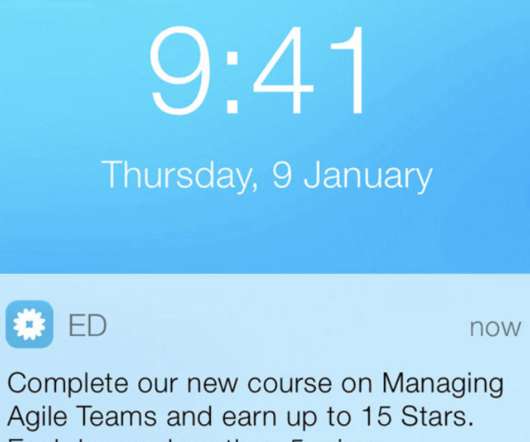Does synchronous training fit the modern workplace?
TalentLMS
APRIL 11, 2022
Powered by technology, self-paced (asynchronous) training is when employees control their own learning journey. You’ll hear the terms synchronous and asynchronous used a lot in conjunction with employee training programs. We’ve briefly touched upon the meaning of asynchronous learning. Let’s look at examples from both scenarios.


















Let's personalize your content